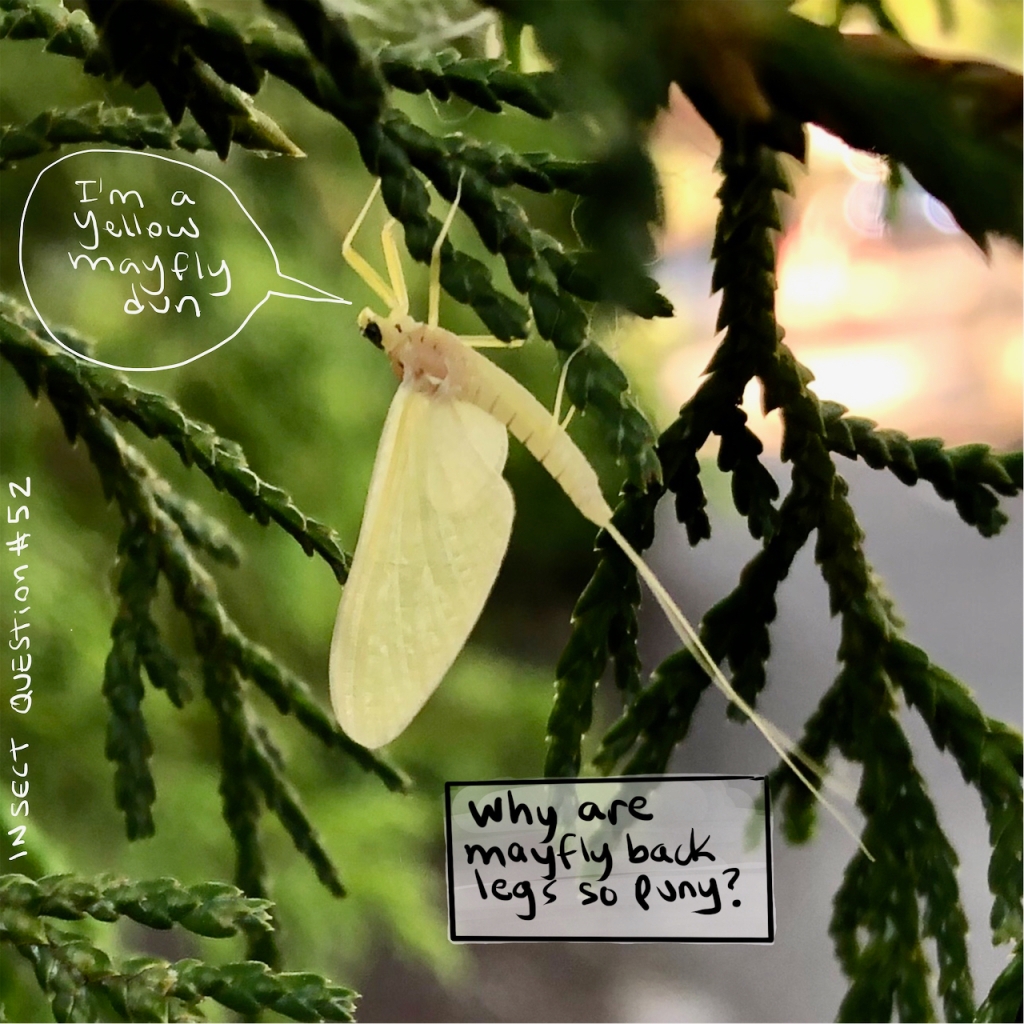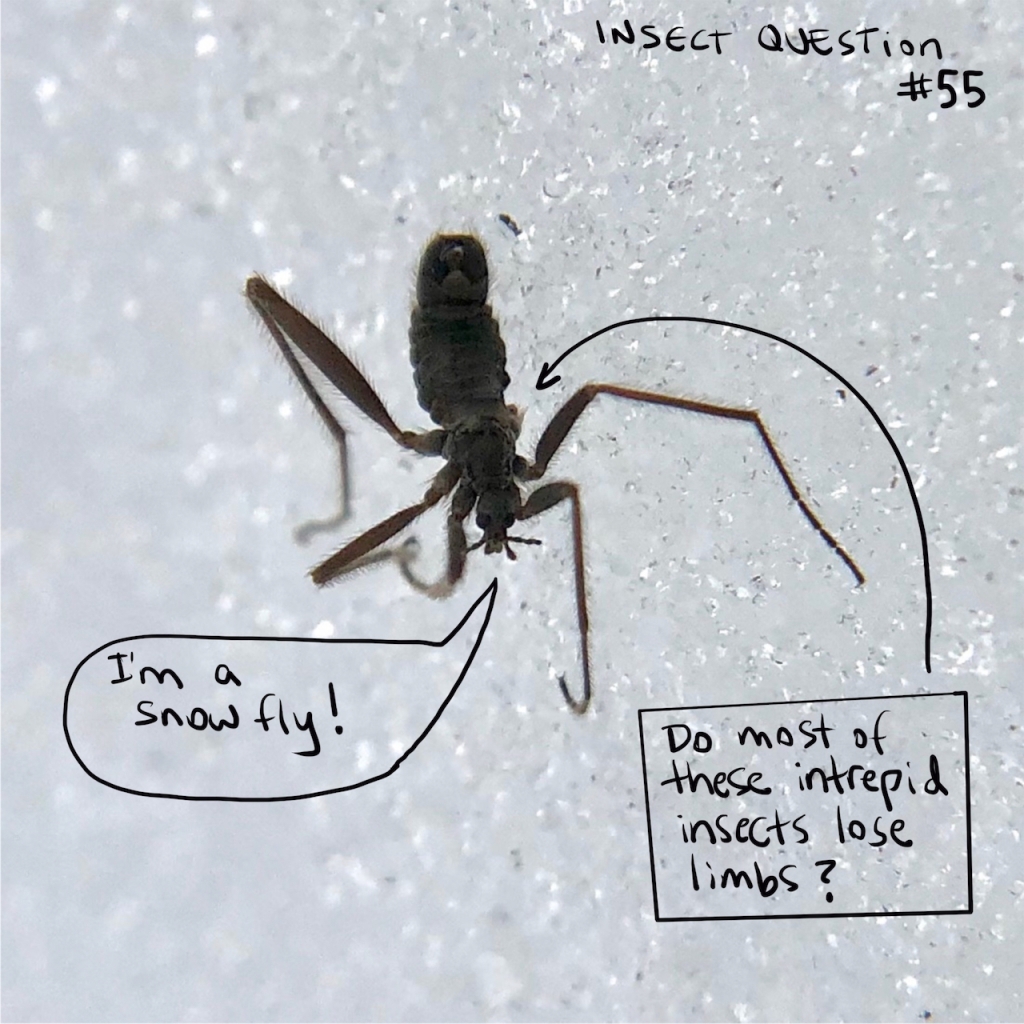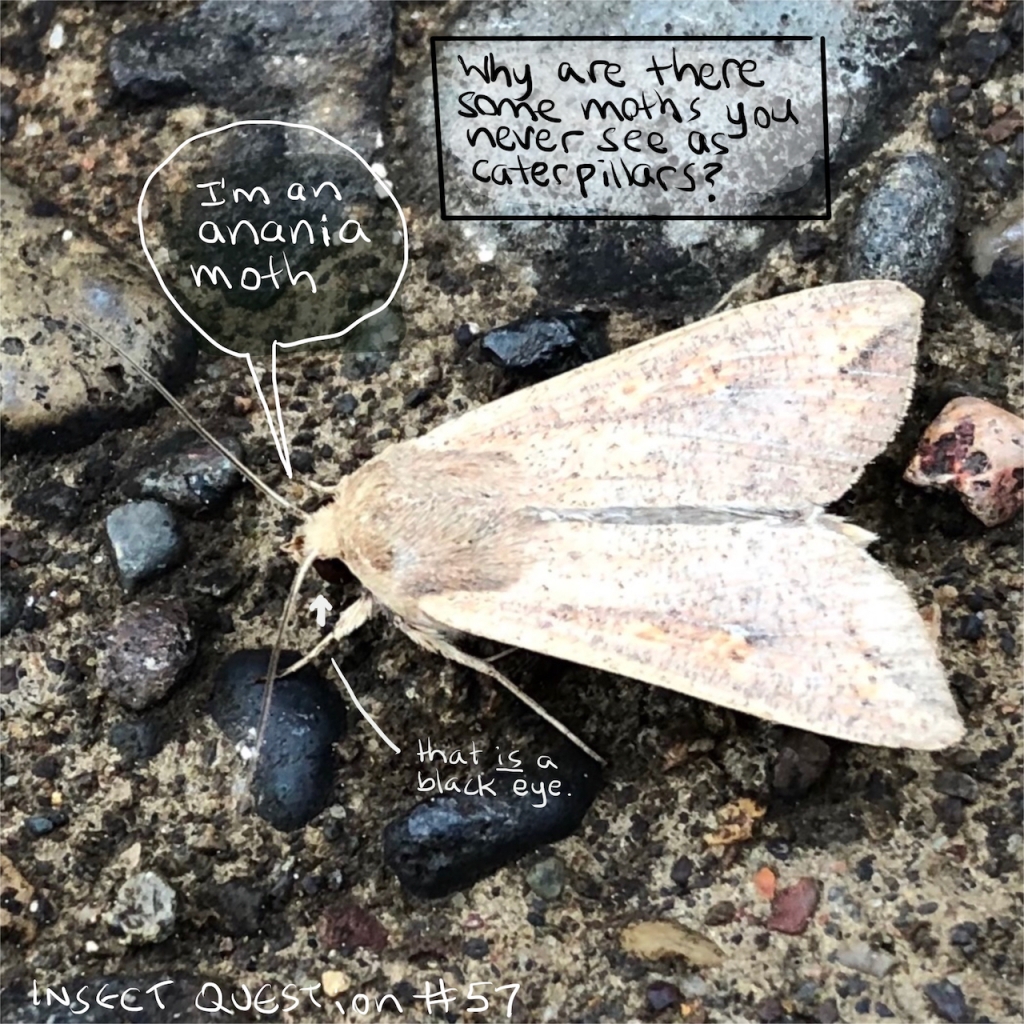
This insect is winning the Best Bug of Winter prize so far. I’ll tell the story of what it is in a minute. But first, some general comments…
I imagined winter would be a season to edit my photographs, put some words to past experiences, do research, and plan future outings. I didn’t think I’d see very many, or any, insects. Much less, interesting ones. Happily, I was wrong!
I knew right away when I saw this long thin insect delicately ambling across the leaf litter of my compost pile, that this was something I hadn’t seen before. From the top, it looks very much like a stick insect, so that’s where I started my research.

There are stick insects (phasmatodea) in the Pacific Northwest, which is heartening, but this isn’t one. People at Bug Guide and on Instagram quickly id’d it as a stilt insect, genus Jalysus. Something I never knew existed, which always makes me very happy.
I’m trying to learn other how to better look for insects. My default has been: 1. Stand in front of flowering plant. 2. Stare and look for movement. But this method won’t help me find anything in winter, and I’ll miss a lot even in the summer. So I tried peeling back bark and flipping over logs. I’m always careful to put things back where I found them.

I saw lots of eggs and very, very tiny things, but also a few good catches, like this ground beetle. It has a mite on its back (Mite Rider?) and a couple of tiny insects to the right.

This crazy fly is a reminder to keep snapping pictures, even if you think you’re seeing something mundane. I didn’t notice this fly’s bizarre antennae until I saw the pictures. Female mosquitoes have barbed feelers like this, but this insect doesn’t have a mosquito’s mouth parts. I’m still searching for its taxonomy.

Occasionally, insects are inside this time of year. Some Hemiptera, or true bugs, live as adults through the winter. This Western Conifer Seed Bug was in my parents’ basement. Even though it wasn’t out in the cold, it was pretty slow moving. Maybe because it hadn’t eaten in weeks?
You may notice all the winter insects shown here are brown or black. I’ve just started seeing flowers outside, and a few more colorful insects. Next time, maybe I can share a wider-ranging palette.



